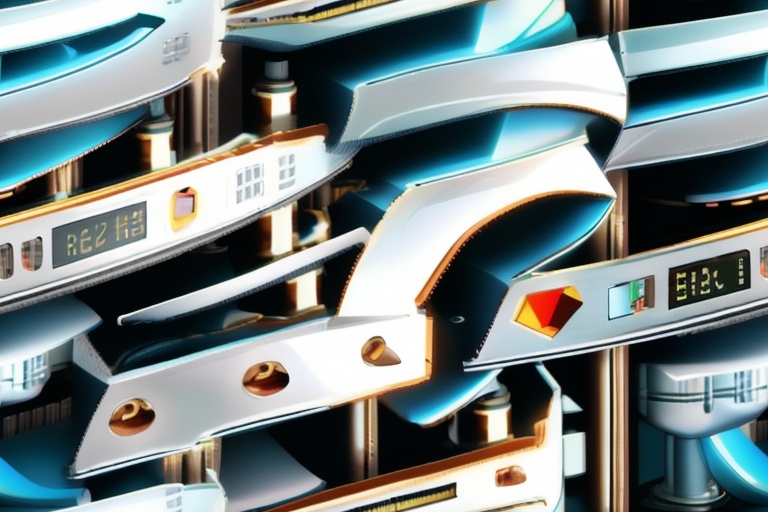Welcome to our comprehensive guide on the essential task of coin storage and preservation. As a dedicated coin enthusiast, you understand that every coin in your collection is more than a piece of currency; it's a snapshot of history, a work of art, and potentially, a substantial financial investment. The methods you use to store your coins can significantly impact their longevity, condition, and ultimately, their value. Let's embark on a journey to explore the fine-tuned processes that will help ensure your coins remain in pristine condition for generations of collectors to appreciate.
Welcome to our comprehensive guide on the essential task of coin storage and preservation. As a dedicated coin enthusiast, you understand that every coin in your collection is more than a piece of currency; it's a snapshot of history, a work of art, and potentially, a substantial financial investment. The methods you use to store your coins can significantly impact their longevity, condition, and ultimately, their value. Let's embark on a journey to explore the fine-tuned processes that will help ensure your coins remain in pristine condition for generations of collectors to appreciate.
Understanding the Risks: Why Proper Storage Matters
Coins, by their very nature, are durable objects designed to withstand daily use. However, when it comes to collecting, the standards for preserving coins far exceed those of circulation. Environmental factors such as humidity, air pollutants, temperature swings, and even direct sunlight can all take a toll on coins over time. The physical handling of coins also presents a risk, with natural oils from hands potentially causing corrosion and diminishing a coin's luster. The way you mitigate these risks will determine the fate of your collection.
To Clean, or Not To Clean?
The dilemma of whether to clean coins before storage is a significant one. For collectors, the prevailing wisdom is to avoid cleaning altogether. The temptation to polish a coin to its original brilliance is understandable, but the cleaning process can cause irreparable harm. Scratches from abrasive materials and chemical reactions from cleaning agents can severely reduce a coin's numismatic value.
However, for coins plagued with surface greases from handling that may prompt tarnishing, a minimal intervention is permitted. A gentle wipe with a lint-free cloth, such as those designed for optical equipment, can remove these substances without damaging the coin. Always exercise caution and when in doubt, seek the advice of an expert conservator.
Materials Matter: Picking the Right Storage
When you've decided to store your coins, the question of materials comes to the forefront. The primary concern here is acidity. Acidic storage materials can release harmful gases over time, which can corrode and disfigure coins. While plastic storage options like polypropylene and polyester provide durability and visibility, PVC-based products must be avoided due to their acidic degradation over time.
For those who prefer a more traditional material, acid-free paper envelopes offer a time-tested solution. Despite not being transparent, these envelopes force collectors to handle the coins less frequently, only taking them out for close inspection or displays, thereby reducing the risk of damage.
Best Practices for Storing Coins
The task of coin storage is not as simple as securing them away from direct contact with harmful elements. It's a multi-faceted approach that includes:
- Using the right type of containers, such as coin albums or binders that offer organization and easy access in an acid-free environment.
- Avoiding crowding coins together, which could lead to scratches or wear from friction.
- Seeking a storage climate that is consistently cool, dry, and stable to prevent environmental decay.
- Employing trays or drawers designed for coins that provide individual spaces to prevent coins from touching one another.
- Ensuring that your storage area is secure and protected against theft and other potential hazards.
Organizing for Preservation
The organization is an essential component in preserving your collection. Employing indexing cards or systematized trays reduces the need to handle the coins directly, which minimizes the chances of accidental damage. Moreover, as collections expand, so does the weight of storage solutions. To avoid the risk of dropping a heavy box of coins, it is preferable to divide the collection among several smaller, more manageable containers.
Finding the Right Environment
The right storage environment can mean the difference between a well-preserved collection and one that is susceptible to damage. Here are some considerations:
- Avoid exposure to potential leaks, from either the weather outside or plumbing inside.
- Protect coins from temperature extremes, steering clear of places known for dramatic fluctuations.
- Keep humidity levels in check, storing coins away from damp areas like bathrooms and kitchens.
- Avoid storing coins against exterior walls where condensation can occur.
- Make sure to accommodate for physical protection of more valuable items, potentially securing them within a suitably sized safe.
Periodic Reviews and Maintenance
Even after implementing an effective storage system, it is not a 'set-and-forget' scenario. Regular checks are needed to ensure the environment remains stable and the storage materials are performing as expected. Be on the lookout for signs of degradation or external threats to your collection's security.
In conclusion, selecting the correct storage materials, considering each coin's unique needs, and consistently monitoring your storage environment are all critical components in maintaining the integrity of your collection. When uncertainty arises, never hesitate to consult with a professional conservator who can provide tailored advice. Through careful and considered practices, your coins can remain in excellent condition, preserving both their beauty and their value. Stay tuned for further insights into the captivating world of coin collecting and valuation, and remember: the longevity of your collection hinges on the quality of its preservation.
Information for this article was gathered from the following source.




